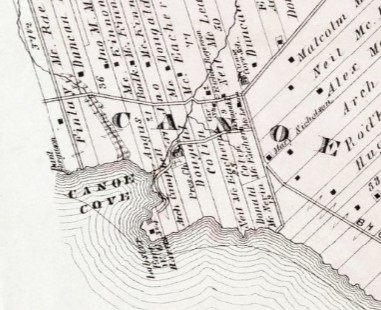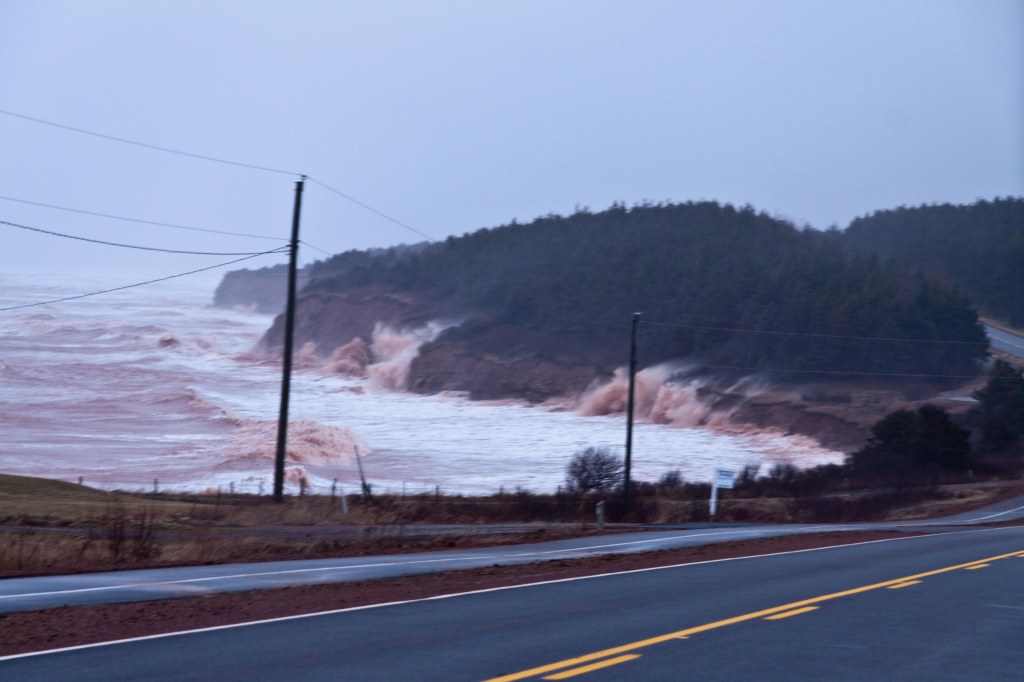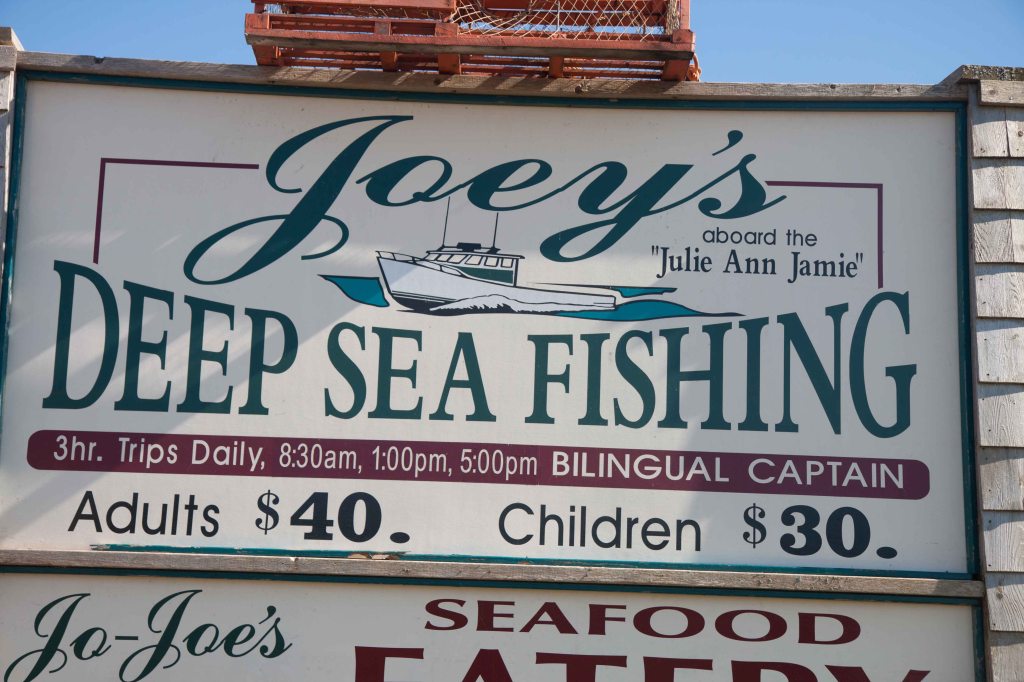In the mid morning of April 26, 1893, a severe snow and windstorm arose suddenly and resulted in some narrow escapes from disaster. The storm raged with some violence for the remainder of the day with winds reported up to 27 mph at Charlottetown but were likely much higher on the waters of Northumberland Strait and Hillsborough Bay.
The steamers plying between Charlottetown to Pictou, NS and Summerside to Point du Chene in New Brunswick had difficult trips and the weather was so thick the crews couldn’t see from one end of the ships to the other.
At Canoe Cove four boats were reported missing from Donald Farquharson’s factory and a Mr. MacLean of Canoe Cove of Canoe Cove reported 3 boats missing from his son’s factory at Canoe Cove and 3 more from Livingstone’s Factory at the same location.

Figure 1: Canoe Cove, 1880 Atlas
James Johnston of Victoria went fishing herring in the morning and was caught by the storm and ended up landing at Thomas Inches’ shore about 2 miles from Crapaud. He had 7 barrels on herring on board.
On the morning of April 27th, Abram Howatt and Charles Clarke landed at Brian’s lobster factory Black Point, after they spend the entire night out in the storm. Mr. Howatt was unable to speak and the doctor from Crapaud travelled to Black Point to assist.

Figure 2 :Black Point, DeSable, PEI, 1880 Atlas
The Schooner, Rising Dawn with Capt. John Hughes Jr. in control, left Charlottetown for Pictou for a load of coal in the morning of the 26th and was lost at Merigomish Harbour, NS in the afternoon or evening. The crew was saved. The Schooner Annabelle, Capt. Bisson, also left Charlottetown about the same time as the Rising Dawn and went ashore at Cariboo, NS with 2 feet of water in her hold.
At 9:00 on the morning of April 26th, the tug, Fred M. Batt left Charlottetown for Flat River with supplies for the Portland Packing Company (lobster cannery). The northwest wind caused severe difficulties about 8 miles past Point Prim, and they turned back towards Charlottetown. On the way back they spotted a small sailboat with 2 onboard who were in great difficulty. The tug was able to get close enough to the boat to load the two passengers and the sailboat was towed behind into Charlottetown. The men on the sailboat were from Halifax County, NS and had been setting lobster traps near St. Peter’s Island when the storm came up suddenly and started to blow them across the bay. One of the men, Edward May reported they had left McLean’s Factory to set traps at 7:00am and about 8:30 to 9:00 am it began to snow heavily, and they started the journey back to the factory when about 9:30 the wind came up causing the boat to start taking on water. The wind was driving the waves and sleet at their boat in huge waves and clouds making it difficult to bail out the boat and keep them from sinking. They anchored about 4 miles off St. Peter’s Island where they eventually were picked up by the tug.
The lobster boats used as the time used sails, so they were very prone to impact from the wind and high waves and they had a low profile in the water which can be visualized in Figure 4.

Figure 3: Charlottetown Harbour & Hillsborough Bay Area Google Earth
After the tug picked up the 2 men it continued towards Charlottetown Harbour and about mid way between Point Prim and St. Peter’s Island they sighted another small sailboat which was being tossed around by the storm. This boat was filled with water and men on board were exhausted and one of them had to be heaved on board the tug with a heaving line due to his weak condition. The boat belonged to Livingstone’s Lobster Factory, Black Point and was occupied by Frank McCormack and Fred Cheverie of Souris, who were out setting lobster traps.
Frank McCormack had a similar story to Mr. May. They had left the Factory at 7:00am to set traps with very little wind blowing at the time. Then the snow began to fall in earnest and the wind increased to blow at a tremendous speed. They headed for St. Peter’s Island and on the way met another boat for the Factory occupied by Joseph Campbell and Robert Steele of Souris. After anchoring near St. Peter’s Island, they saw another boat from Souris occupied by Robbie Perry and Dan Kennedy, and they told MacCormack and Cheverie to reef their sails and go with them which they decided to do. The wind was too heavy, so they headed back to St. Peter’s Island. About 3 miles from this Island another Souris boat occupied by Frank and Neal Deagle were tied securely to a lobster buoy. About 45 minutes later they sighted the tug, and they went on board. The snow and sleet were blowing over them in clouds and their boat was half filled with water.
It certainly was a close call for all those involved and the small, low profile lobster boats at the time used sails for navigation so were very susceptible to high gusting winds.

Figure 4: PEI Fishing Boat pre-1910, PEI Archives Collection
Sources: The Examiner, April 27, 1893; Meacham’s 1880 Atlas of PEI; Google Earth Pro, 2024; PEI Archives, Grand Tracadie Collection


